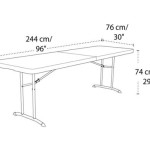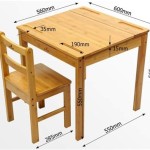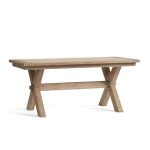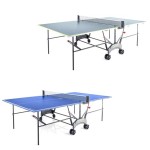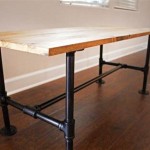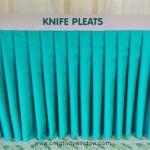```html
How To Make Your Own Top Table Flower Arrangement
Creating a top table flower arrangement offers a personalized and cost-effective alternative to purchasing pre-made pieces. Whether for a wedding, anniversary, or other special occasion, a handcrafted arrangement allows for complete control over the aesthetic, ensuring it perfectly complements the event's theme and color palette. This article will outline the key steps involved in designing and constructing a stunning top table floral display.
Planning and Preparation: Setting the Foundation for Success
Before acquiring any materials, careful planning is essential. The initial stage involves determining the arrangement's size, style, and color scheme. Considerations should include the dimensions of the top table, the overall decor of the venue, and personal preferences. A sketch or mood board can be invaluable in visualizing the final product and ensuring a cohesive design.
The size of the arrangement should be proportionate to the table it will adorn. A small table necessitates a more compact arrangement, while a larger table can accommodate a more expansive display. The style should align with the event's atmosphere. For a formal wedding, a classic and elegant arrangement with roses and lilies might be appropriate, whereas a rustic celebration might call for a more natural and informal arrangement incorporating wildflowers and greenery.
Selecting a color scheme is another crucial step. Harmonious color combinations enhance the visual appeal of the arrangement and contribute to the overall ambiance of the event. Consider the existing color palette of the venue, as well as the colors of any linens or other decorative elements. Complementary colors, such as blue and orange or yellow and purple, create a vibrant and eye-catching contrast. Analogous colors, such as blue, blue-green, and green, offer a more subtle and harmonious effect.
Once the design is finalized, a list of necessary materials should be compiled. This list will typically include flowers, greenery, floral foam, a container, floral tape, scissors or floral shears, and optionally, additional decorative elements such as ribbons, beads, or crystals.
The choice of flowers will significantly impact the overall aesthetic of the arrangement. Consider the seasonality of different flowers, as well as their availability and cost. Roses, lilies, hydrangeas, and lisianthus are popular choices for formal arrangements, while sunflowers, daisies, and wildflowers are better suited for more casual events. Greenery adds texture and depth to the arrangement and can include eucalyptus, ferns, ivy, or salal.
The container should be chosen to complement the style of the arrangement and the decor of the venue. Options include ceramic vases, glass bowls, metal containers, or even repurposed items such as wooden boxes or vintage teacups. The container should be watertight and provide a stable base for the arrangement. Floral foam is used to hold the flowers in place and provide them with a source of water. It is typically available in blocks or shapes that can be cut to fit the container.
The Construction Process: Bringing the Vision to Life
With the planning complete and materials gathered, the construction of the arrangement can begin. The initial step is to prepare the floral foam by soaking it in water. Place the floral foam in a basin of water and allow it to absorb water until it is fully saturated. Do not force the foam to sink, as this can create air pockets and prevent thorough saturation. A fully saturated block of floral foam will be heavy and dense.
Next, trim the floral foam to fit snugly inside the container. Use a sharp knife or floral shears to cut the foam to the appropriate size and shape. Ensure that the foam extends slightly above the rim of the container to provide ample space for inserting flower stems. Secure the floral foam to the container using floral tape. Create a grid of tape across the top of the container, adhering the tape to the sides of the container and the top of the foam.
Begin adding greenery to create a foundation for the arrangement. Insert stems of greenery into the floral foam at various angles, creating a framework that will support the flowers. Start with larger pieces of greenery and then fill in with smaller pieces to create a textured and layered effect. The greenery should extend beyond the edges of the container to create a natural and flowing shape.
Now, add the focal flowers, which are typically the largest and most visually striking flowers in the arrangement. Position the focal flowers strategically throughout the arrangement, creating points of interest and drawing the eye. Consider the height and angle of each flower, ensuring that they are evenly distributed and balanced. Rotate the container as you work to ensure that the arrangement looks appealing from all angles.
Fill in the gaps between the focal flowers with smaller flowers and filler flowers. These flowers add color and texture to the arrangement and help to create a cohesive and polished look. Use a variety of different flower types and colors to add visual interest. Insert the stems of the flowers into the floral foam at various angles, ensuring that they are securely held in place.
Step back and assess the overall balance and symmetry of the arrangement. Make any necessary adjustments to ensure that the arrangement is visually appealing from all angles. Add or remove flowers as needed to achieve the desired effect. Consider the height, width, and depth of the arrangement, ensuring that it is proportionate to the table it will adorn.
Finishing Touches and Maintenance: Ensuring Longevity and Beauty
Once the arrangement is complete, add any final decorative touches, such as ribbons, beads, or crystals. These elements can add a touch of elegance and sophistication to the arrangement. Secure the decorative elements to the arrangement using floral wire or glue.
To prolong the life of the arrangement, keep the floral foam moist. Check the foam regularly and add water as needed. Use a watering can or a spray bottle to gently moisten the foam without disturbing the flowers. Avoid overwatering, as this can lead to fungal growth and shorten the lifespan of the arrangement.
Remove any wilted or damaged flowers promptly. This will help to prevent the spread of disease and maintain the overall freshness of the arrangement. Gently remove the affected flowers with scissors or floral shears, being careful not to damage the surrounding flowers.
Store the arrangement in a cool, dark location when not on display. This will help to slow down the rate of transpiration and prolong the life of the flowers. Avoid placing the arrangement in direct sunlight or near sources of heat, as this can cause the flowers to wilt prematurely.
By following these steps, anyone can create a beautiful and personalized top table flower arrangement. The process requires careful planning, attention to detail, and creativity, but the results are well worth the effort. A handcrafted arrangement adds a personal touch to any event and serves as a memorable centerpiece that will be admired by all.
```
Simple Diy Garden Flower Arrangement Sanctuary Home Decor

How To Make An Easy Fl Foam Arrangement

Simple Diy Garden Flower Arrangement Sanctuary Home Decor

10 Easy Diy Flower Table Arrangements Expert Florist Tips

63 Stunning Diy Wedding Centerpieces
8 Easy Steps To Arrange Flowers According A Fl Designer

Diy Bouquet Bar The Perfect Brunch Or Bridal Shower Activity Fif

Simple Diy Garden Flower Arrangement Sanctuary Home Decor

35 Eggcellent Easter Flower Arrangement Ideas For Your Table 2024

Create Your Own Fl Arrangement Arrangements Diy Flower


